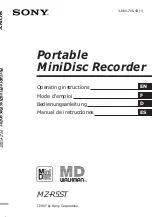
85
RQT9385
Referen
c
e
Pan&Scan/Letterbox
In general, DVD-Video are produced with the intention that they be
viewed on a widescreen television (16:9 aspect ratio), so images
often don’t fit regular (4:3 aspect ratio) televisions. Two styles of
picture, “Pan & Scan” and “Letterbox”, deal with this problem.
Playback control (PBC)
If a Video CD has playback control, you can select scenes and
information with menus.
(This unit is compatible with version 2.0 and 1.1.)
Progressive/Interlace
The PAL video signal standard has 576 (or 625) interlaced (i) scan
lines, whereas progressive scanning, called 576p (or 625p), uses
twice the number of scan lines. For the NTSC standard, these are
called 480i (or 525i) and 480p (or 525p) respectively.
Using progressive output, you can enjoy the high-resolution video
recorded on media such as DVD-Video.
Your television must be compatible to enjoy progressive video.
Panasonic televisions with 576 (625)/50i · 50p, 480 (525)/60i · 60p
input terminals are progressive compatible.
Protection
You can prevent accidental deletion by setting writing protection or
deletion protection.
RGB
This refers to the three primary colours of light, red (R), green (G),
and blue (B) and also the method of producing video that uses them.
By dividing the video signal into the three colours for transmission,
noise is reduced for even higher quality images.
Sampling frequency
Sampling is the process of converting the heights of sound wave
(analog signal) samples taken at set periods into digits (digital
encoding). Sampling frequency is the number of samples taken per
second, so larger numbers mean more faithful reproduction of the
original sound.
Thumbnail
This refers to a miniature representation of a picture used to display
multiple pictures in the form of a list.
WMA (
[EH69]
[EH59]
)
WMA is a compression format developed by Microsoft Corporation.
It achieves the same sound quality as MP3 with a file size that is
smaller than that of MP3.
1080i
In one high definition image, 1080 (1125) alternating scan lines pass
every 1/50th of a second to create an interlace image. Because
1080i (1125i) more than doubles current television broadcasts of
480i (525i), the detail is much clearer and creates a more realistic
and rich image.
1080p
In one high definition image, 1080 (1125) scan lines pass at the
same time every 1/50
th
of a second to create a progressive image.
Since progressive video does not alternate scan lines like interlace,
there is a minimal amount of screen flicker.
720p
In one high definition image, 720 (750) scan lines pass at the same
time every 1/50
th
of a second to create a progressive image. Since
progressive video does not alternate scan lines like interlace, there
is a minimal amount of screen flicker.
Pan & Scan:
The sides are cut off so the picture
fills the screen.
Letterbox:
Black bands appear at the top and
bottom of the picture so the picture
itself appears in an aspect ratio of
16:9.
EH6959EC-RQT9385-L_eng.book 85 ページ 2009年4月27日 月曜日 午後3時50分




































